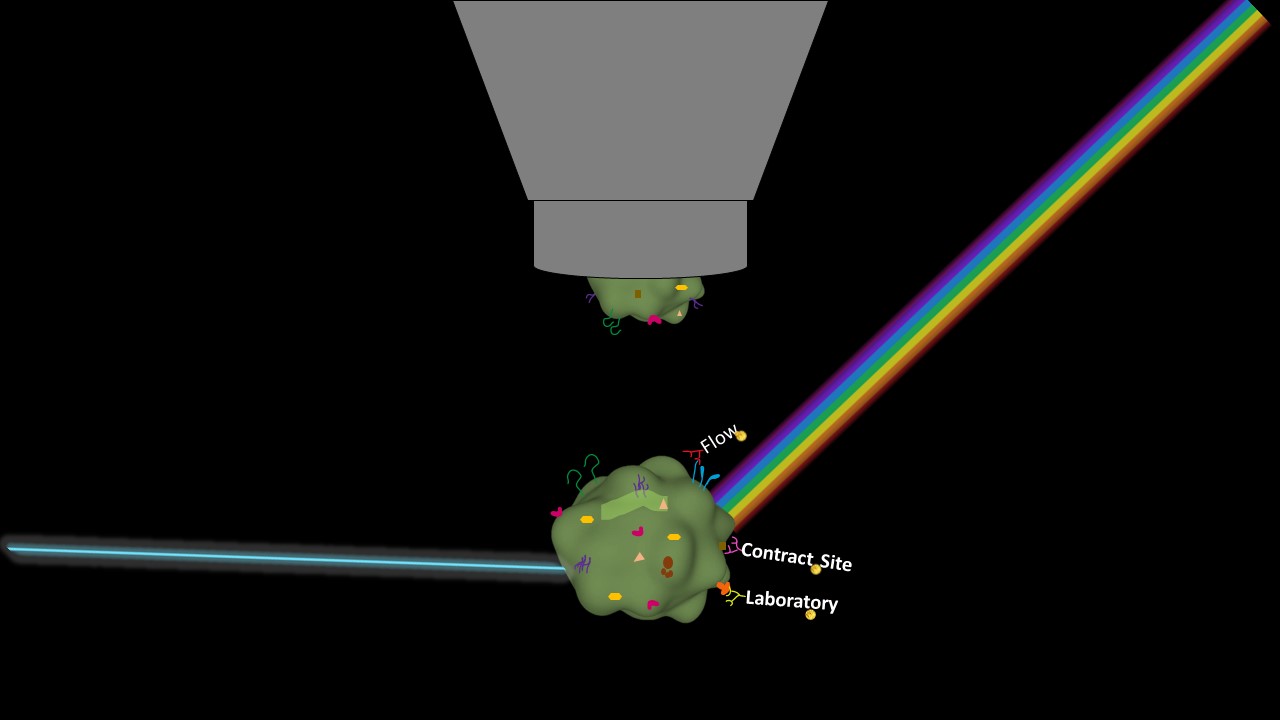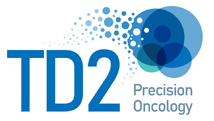Large Panel Design to Identify Human and Mouse Lymphocyte Subsets Using Cytek® Aurora Flow Cytometers

Flow Contract Site Laboratory (FCSL) is a flow cytometry based Contract Research Organization (CRO) that develops assays based on client wants and needs. We have an expert team of scientists to help you answer your flow cytometry questions, such as: how best to detect the cell populations of interest to generate high quality data. We are experienced in handling and processing a wide variety of samples ranging from whole blood, bone marrow and all types of tissue. All using a minimal volume of the sample (50-100µL) and based on the protein markers that clients want tested. Technological advancement in spectral flow cytometry allows for the development of large flow cytometry panels reaching > 20 colors at the single-cell level and can employ fluorophores with very similar emissions but have unique overall spectral fingerprints. The process of panel design and optimization are key steps to generate quality panels. In general, there are 4 steps for successful panel design (1).
- Review of biological pathways and identification of CD markers that identify the populations of interest to the client.
- Selection of fluorophores for the panel that will work well together. A web based full spectrum viewer is used to do this.
- Assigning fluorophores to the markers. Knowledge of marker expression levels and co-expression are essential in choosing the proper fluorophores for the proper CD Marker.
- Testing the panel on the cells.
Once the panel is designed, the next steps are the processes of panel optimization. At FCSL, we followed the standard protocol for panel optimization for High-Dimensional Immunophenotyping Assays (2). The steps include
- Preparation and evaluation of optimal spectral reference controls
- Unmixing evaluation of fully stained sample
- Evaluation of marker resolution
- Assessment of data quality using expert gating
Based on our experience, research, and knowledge, the markers of interest to the client are characterized from primary (high density, on or off expression) secondary (Intermediate density, continuous expression) and tertiary (low density, unknown expression). We then pair these markers with bright, medium, and dim fluorophores in order to ensure good resolution of all markers. Lastly, we set up the reference controls which allows for unmixing of the overlapping spectra.
FCSL is pleased to include two Cytek® Aurora flow cytometers (Cytek Biosciences) in our repertoire of instruments to service our clients drug development programs. These instruments have a four-laser detector array configuration that can detect >20 markers in one sample. We have been hard at work developing client customizable panels for immunophenotyping human cell subsets and for animal models. The fluorophores and markers used in some of our example panels are described below.
For human specimens, Panel 1 characterizes granulocytes or myeloid subsets, Panel 2 characterizes the conventional T, NK, and B subsets. Panel 3 is for T and NK cell functions, Panel 4 is for profiling of exhausted T cells and Panel 5 is Plasma Cells and Dendritic Cells. For each of these panels, there are some open channels that allow for further customization and expansion for markers of interest (Table 1).

List of custom-made panels used for immunophenotyping of human lymphocyte and granulocyte subsets in tissue samples from human and human immunized mice at FCSL.
* refers to the lineage pooled antibodies including anti-human CD3, CD19 and CD56.
a refers to the anti-mouse CD45 antibody
b refers to the anti-human CD45 antibody
– refers to antibody labeled fluorophores not yet included in the panel.
We can also customize animal model panels which will serve your research needs (Table 2). Three example mouse panels are presented below. Pane 1 is for identifying T cells and T regulatory cells, Panel 2 is myeloid cells and Panel 3 is T cells and Macrophages.

List of custom-made panels used for immunophenotyping of mouse cell subsets at FCSL site.
– refers to antibody labeled fluorophores have not yet included in the panel
Here are some example data from one of our clients. The client aims to track the engraftment of human lymphocyte subsets in mouse models. The tissue samples were processed and stained with panel 2 from table 1 and Fluorescence Minus One (FMO) control panel at FCSL site. This antibody panel consisted of 25 fluorophores. The overlapping emission and uniqueness of fluorophores were analyzed by a spectral viewer software ( https://spectrum.cytekbio.com/) (3). Results showed that there were highly overlapping emission range of fluorophore used. However, most pair of dyes are unique, and the complexity of panel was 21.63 which shows that panel was well designed and likely to identify cell populations accurately (Figure 1)


Figure 1. Example of spectral signatures and similarity index of custom-panel design with 25 fluorophores. Top Panel) The emission wavelength of the 25 fluorophores used. The X axis represents emission channels from each fluorophore and the y axis represents the normalized emission. Bottom Panel) The similarity and complexity of panel. The figures were analyzed from spectrum viewer software from website: https://spectrum.cytekbio.com/.
The stained samples were acquired on Cytek® Aurora spectral flow cytometers, the raw and unmixed data were acquired using SpectroFlo® software, and the results were analyzed by using FlowJo™ software. Our gating strategy was to first gate the total cells, then doublets and dead cells were excluded. Then the mouse and human lymphocytes were separated into mouse and human CD45 cells (Fig.2A). From the human CD45+ gate, NK cells were identified from CD3-CD335+ and classified as early NK (CD56+ CD16−), mature NK (CD56+ CD16+ Granzyme B+), and terminal NK (CD56−CD16+) (Fig.2B). Plasma cells were firstly gated on CD3-CD335- and identified by CD19-CD20-, then CD27+IgD- and CD138-CD38- (Fig.2D). Gamma delta T cells were identified by CD3+gamma delta TCR+ (Fig.3A). B cells were gated from CD3-gamma delta TCR- and then identified as CD19+CD20+. B cell subsets were classified as Memory and Naïve cells with IgD and CD27 expression (Fig.2C). Conventional T cell subsets were identified as CD3+ TCRgd- CD4+ (Fig.3B) and CD8+T cells (Fig.3C) were identified. Classification of memory and naïve cell subsets were based upon expression of CD45RA and CD45RO. The inclusion of PD1 and CCR7 (CD197) enables identification of the naïve memory CD4+T cells. The memory CD4 cells were firstly gated on CD38+ HLA-DR+ population and then gating of CD45RO and CD45RA aided to identify effector T cells or effector memory T cells. Inclusion of CCR7+ enables to further identify effector (CCR7-CD45RO+) or central memory CD4+T (CCR7+CD45RO+) (Fig.3B). Naïve CD8 cells were identified as CD45RA- and CD197+. Identification of effector or memory CD8+T cells were used same gating as CD4. Inclusion of PD-1 and granzyme B enables classification of the functional memory CD8+T cells (C). Tregs were identified from the CD4+ population using FoxP3+CD25+ cells and inclusion of CD127 and PD-1 (CD279) aids in identifying regulatory T cells (D). From these example results, our data suggested that the antibody panel was optimized and high resolution of markers in panel were shown.
Figure 2

Figure 2. The example of gating strategy used to evaluate the human lymphocyte subsets in mouse samples. Arrows are used to visualize the relationships across plots, and letters are used to call attention to populations described here. After doublets and dead cells were excluded, mouse and human lymphocytes were separated by anti-mouse and human CD45 (A). From the human lymphocyte gate, CD3-CD335+ were firstly gated and further classified as early NK (CD56+ CD16−), mature NK (CD56+ CD16+ Granzyme B+), and terminal NK (CD56−CD16+) (B). From the same gating, CD3-CD335-were firstly gated and Plasma cells were identified by CD19-CD20-, then CD27+IgD- and CD138-CD38- (D). To identified B cells, the cells with CD3-TCRgammadelta- were firstly gated, B cells were then identified as CD19+CD20+ and further classified as Memory and Naïve cells with IgD and CD27 expression (C). The data presented are from different mouse tissues samples stained with the same 25-color panel (custom made panel No. 2). NK (B) and B cells (C) gating were from splenocytes, and Plasma cells (D) were from Bone Marrow. Data were taken from different time points of sample collection to represent the best resolution of lymphocyte subsets. FMO staining were used for gating placement (Data not shown).
Figure 3
Figure 3. The example of gating strategy used to evaluate the T cell subsets in mouse samples Human T cell subsets were identified from human CD45+. Human cells were divided into three groups based on expression of CD3 and gamma delta TCR expression. The gamma delta T cells were identified as CD3-TCRgd+ (A). CD4+T and CD8+T cell subsets were from CD3+TCRgd- population. Classification of memory and Naïve cell subsets were classified based on the expression of CD45RA and CD45RO. The inclusion of PD-1 and CCR7 (CD197) enables identification of the naïve memory CD4+T cells. The memory CD4 cells were firstly gated on CD38+ HLA-DR+ population and then gating of CD45RO and CD45RA aided to identify effector T cells or effector memory T cells. Inclusion of CCR7+ enables to further identify effector (CCR7-CD45RO+) or central memory CD4+T (CCR7+CD45RO+) (B). Naïve CD8 cells were identified as CD45RA- and CD197+. Identification of effector or memory CD8+T cells used the same gating as CD4. Inclusion of PD-1 and granzyme B enables the classification of the functions of memory CD8+T cells (C). Tregs were identified from the CD4+ population using FoxP3+CD25+ cells and inclusion of CD127 and PD-1 (CD279) aids identified regulatory T cells (D).
If you are interested in seeing how large flow cytometry panels such as the ones described can help you and your program, please contact us for more information!
References
- Anon. Quality Panel Design to Generate Quality Data with Case Studies. Available at: https://cytekbio.com/blogs/videos. Accessed May 12, 2022.
- Ferrer-Font L, Small SJ, Lewer B, Pilkington KR, Johnston LK, Park LM, Lannigan J, Jaimes MC, Price KM. Panel Optimization for High-Dimensional Immunophenotyping Assays Using Full-Spectrum Flow Cytometry. Current Protocols 2021;1.
- Anon. https://spectrum.cytekbio.com/.

